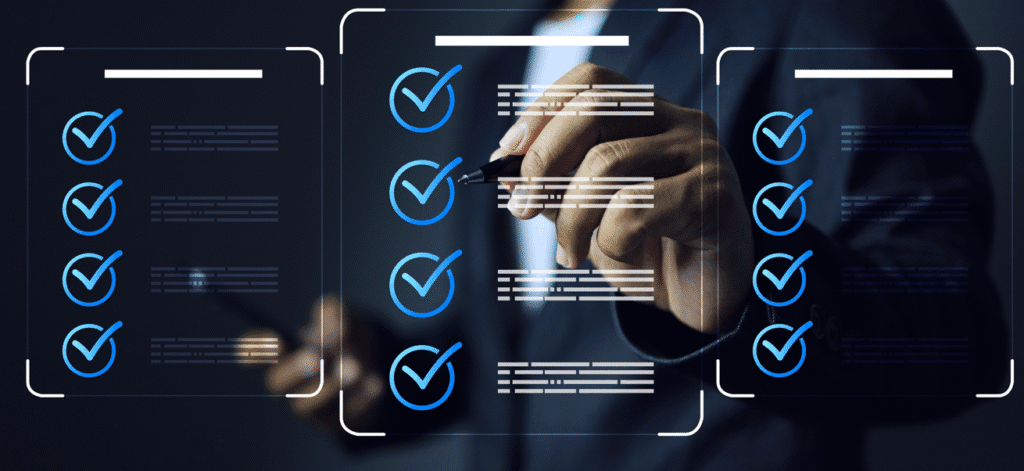In cybersecurity, you can’t protect what you don’t know exists. That’s why having a complete and current inventory of your hardware and software assets is one of the most fundamental and often overlooked elements of a strong security program.
Whether you’re running a small business or managing a large enterprise, asset visibility has a direct impact on your ability to detect vulnerabilities, respond to threats, and maintain compliance. As cyberattacks become more sophisticated, failing to track your technology footprint leaves your organization exposed.
What Is an Asset Inventory?
An asset inventory is a comprehensive list of all the devices, applications, and systems in your environment. This includes laptops, servers, cloud instances, mobile devices, routers, installed software, open-source packages, and even shadow IT—those unauthorized tools teams use outside official IT channels.
More than just a static list, a modern asset inventory should provide real-time or near-real-time visibility. It should show what’s connected, what’s running, who owns it, when it was last updated, and where it sits within your network.
Why It Matters
1. Vulnerability Management Starts Here
Before you can fix a vulnerability, you need to know whether the affected asset is in your environment. Without an accurate inventory, you are unaware of the full extent of your asset exposure.
For example, in April 2024, a critical vulnerability was identified within Cisco’s Adaptive Security Appliance (ASA) and Firepower Threat Defence (FTD) firewalls. This flaw allowed unauthenticated remote attackers to reload or crash devices via crafted TLS packets. Organizations relying on Cisco gear had to quickly identify whether these devices were in use and, if so, whether they were running vulnerable firmware versions.
Companies with mature asset inventories and automated discovery tools could react immediately, prioritizing patching or isolation. Those without this visibility scrambled to figure out if they were at risk, often days after the exploit became public.
2. Real-Time Alerts Are Only Useful If You Know What You Own
Subscribing to services like US-CERT or CISA’s Known Exploited Vulnerabilities (KEV) Catalogue is a smart move. These platforms publish up-to-date information on active threats and zero-day vulnerabilities. But alerts are only valuable if you can act on them quickly.
To operationalize these alerts, you need to cross-reference the threat with your current asset base. That’s nearly impossible without an accurate inventory. It’s not just about reading advisories; it’s about knowing whether any of your assets are affected and where they reside.
According to ISACA, “The collaboration between threat intelligence and a well-maintained IT inventory yields significant advantages, including timely insights and prioritization of mitigation.”
Organizations with reliable IT inventories are equipped to be more effective at mapping alerts to assets and accelerating remediation. They didn’t need to guess or manually dig through outdated records—they had answers in seconds.
3. Asset Visibility Reduces Your Attack Surface
Unmanaged, outdated, or unauthorized assets opens the doors to vulnerabilities. Even innocent oversights like forgotten test environments, old software versions, or duplicate cloud services—can expose businesses to serious risk.
According to Redjack, “Without an accurate inventory, your organization may overlook critical components, making it easier for attackers to exploit unnoticed vulnerabilities or third-party connections.”
An updated inventory helps identify which assets are missing critical patches, running legacy protocols, or are simply no longer needed. Removing or securing these assets reduces your attack surface and frees up IT resources.
4. Supports Compliance and Audits
Frameworks such as NIST CSF, ISO 27001, and CIS Controls all emphasize the importance of asset inventory as a foundational requirement. In a regulatory environment where audits are increasing, being able to produce a verifiable list of all hardware and software, along with versioning, ownership, and lifecycle details, can help avoid penalties and build trust with partners and regulators.
5. Enables Automation and Response
For large environments, manual methods are not scalable. Lansweeper’s 2025
Article emphasizes that, “Manual tracking and siloed tools can’t keep pace with today’s dynamic IT environments. With edge computing, AI-driven infrastructure, and an explosion of connected devices, a future-ready asset inventory solution isn’t optional, it’s essential.”
With automated tools like Lansweeper or Microsoft Defender for Endpoint, you can connect asset inventories to patch management systems, security incident response platforms, and vulnerability scanners. This integration enables a proactive approach, automatically flagging risks and triggering mitigation steps.
Getting Started: Practical Steps
You don’t need to start with enterprise-grade tools. For small businesses, even a structured spreadsheet updated regularly is better than nothing. As your environment grows, consider tools that support automated discovery, API integrations, and threat alert correlation.
Here’s a quick checklist to guide your efforts:
- Identify all endpoints, including servers, laptops, mobile devices, cloud assets, and IoT devices.
- Document software: applications, operating systems, browser plugins, third-party tools.
- Map ownership: assign responsibility to teams or individuals.
- Track lifecycle: purchase dates, warranty status, patch history.
- Integrate alerts: subscribe to US-CERT, CISA KEV, vendor advisories.
- Review regularly: set a schedule for updates and audits.
In Conclusion
In today’s threat landscape, visibility is a powerful asset. An up-to-date asset inventory enables organizations to respond more quickly, patch vulnerabilities more effectively, and mitigate risk in a measurable way. Pairing it with trusted alerting services ensures you’re not just reacting to threats—you’re staying ahead of them.
If your business is still relying on outdated or incomplete inventory practices, now is the time to take action. Start simple, scale smart, and make asset management a cornerstone of your cybersecurity strategy.
Resources
Cravens, Christina. “Why Is Creating An Asset Inventory Critical for Your Security Posture” Redjack, 30 July. 2024, redjack.com/resources/creating-asset-inventory-critical-for-cybersecurity?
Kwan, Tak Wah “ISACA Now Blog 2023 Navigating Security Threats with IT Inventory Management.” ISACA, www.isaca.org/resources/news-and-trends/isaca-now-blog/2023/navigating-security-threats-with-it-inventory-management?
Libeer, Laura. “Automating IT Asset Inventory for Large Networks in 2025 – Lansweeper.” Lansweeper, 4 July 2025, www.lansweeper.com/blog/itam/how-to-automate-it-asset-inventory-for-large-networks.
Need more info?
Take the next step—contact us today for a free compliance and cybersecurity strategy session and find out how our team can support your business.
Our Cyntry experts can identify strategies to safeguard your data and systems. At Cyntry, simplifying the compliance journey and strengthening your security posture is what we do best.
Book a no-cost 30-minute compliance and cybersecurity strategy session at Cyntry.com



